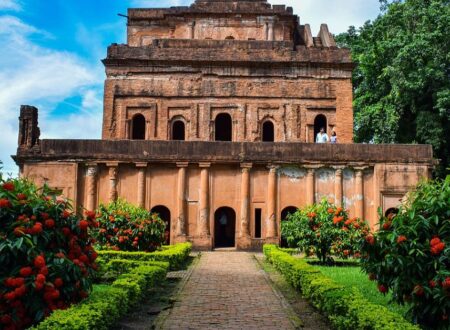Before the rise of the Mughal Dynasty, India was a land of different empires and segregated cultures. Each empire had its cultural contributions. These contributions never left the confines of the empire itself. That is what sets the Mughal and Maratha dynasty apart.
At its peak, The Mughal Dynasty spanned almost the entire Indian subcontinent. It propagated several art forms throughout the country and started its schools of paintings. These were later responsible for starting many art movements in the country. The Mughals ruled the country for almost three centuries, surrounded by incredible rich, created magnificent architecture, and developed arts and culture. They helped art forms such as miniature paintings, architecture, and elaborate autobiographies!
The rise of the Maratha Dynasty in 1674 bought in a continuation of these art forms. Maratha’s wall paintings and architecture added a new feather to India’s art and culture cap. The Maratha Dynasty was the one to adopt different schools of art to develop their unique one!
Mughal and Maratha dynasties effect on India’s arts, literature, and society
Mughal Miniature Paintings

Indian miniature painting can be traced back to Buddhist Pala era palm leaf manuscripts in eastern India and Jaina palm leaf manuscripts in western India. Despite its early emergence, the miniature painting reached its full potential when India directly contacted Islamic civilization. Mughal miniatures were small, brightly coloured, and highly detailed paintings adorned manuscripts and art books. They were only a few square inches in size as they were exact, despite their small size, with certain lines painted with single-hair brushes.
Maratha Wall Paintings

Murals on the walls of wadas and miniatures used in manuscripts are examples of Maratha’s style of paintings. The murals can be seen in old wadas, temples, and ceilings, among other places. Rajput and European painting styles impacted the Maratha style. According to scholars who researched them, religious motifs and deities were prevalent in Maratha Dynasty art. Today, Rangolis (floor art created with coloured powder) is still created in the same way.
Mughal Architechture

Mughal architecture is an Indo-Islamic architectural style that flourished in northern and central India from the 16th
through the 18th century under the patronage of Mughal monarchs. It’s a balanced and ornate blend of Persian, Turkish, and Indian architecture. The Mughals were also known for designing beautiful gardens in the Persian charbagh style, in which quadrilateral gardens were divided into four smaller sections by walkways or running water. They also used fine, hard stones while constructing important buildings and engraved them with beautiful floral patterns.
Maratha Architechture
The forts built on the highest mountaintops and wadas are emblematic of Maratha architecture. In Maratha architecture, the woodwork includes pillars, arches, and smaller pillars. Featured miniature wooden sculptures such as floral themes, peacocks, small birds, greenery, and creepers. The jutting meghdambari on the WADA’s front is mainly wood. Most people admire the Vishrambaug Wada’s facade, or meghdambari, because it is the most beautiful structure section.
Each of the Mughal and Maratha Dynasty shaped India into what it is today. The Mughal dynasty has made significant contributions to India’s architectural, literary, and cultural heritage. The Mughal and Maratha traditions strongly impacted Indian art and Literature. The Taj Mahal is the most famous example! The centuries-old forts are still standing strong, just as they were on the first day. Their styles of writing and painting still inspire art and Indian Literature, and the ruler’s philosophy runs strong in Indian society to this day.
Follow India Chalk on Instagram for more amazing travel content. You can share your travel story with us. Reach out to us on email at contact[at]ndiachalk[dot]com. This blog is curated by India Chalk and written by Aryaki Mishra.







2 Comments